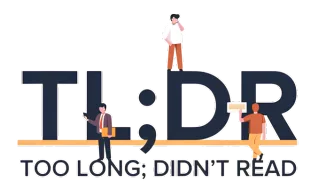There’s a story many of us hear about crypto. It’s the one whispered in hushed tones, often amplified by headlines, suggesting digital assets are mostly a playground for shady dealings. You know the one. It paints a picture of dark corners and illicit transactions, a place where crime and corruption thrive unseen.
- The prevailing narrative that crypto is primarily used for illicit activities is inaccurate and lazy, according to Ripple’s Chief Legal Officer, Stuart Alderoty. He argues this view ignores the everyday, practical uses of digital assets by millions of people.
- Alderoty emphasizes that transactions on public blockchains are transparent and traceable, making crime harder to conceal rather than easier. He believes the focus should be on the utility of crypto for ordinary individuals and small businesses, such as faster settlements and reduced intermediaries.
- The National Cryptocurrency Association (NCA), backed by Ripple, aims to improve crypto literacy and promote safe adoption by highlighting user experiences and practical use cases. Alderoty advocates for clear regulatory guardrails to foster innovation and consumer protection within the U.S.
But what if that story, while convenient for some, misses the mark entirely? Stuart Alderoty, Ripple’s Chief Legal Officer, certainly thinks so. He recently challenged this widely accepted narrative, calling it “a convenient narrative, but a lazy and inaccurate one.” He believes it ignores the everyday reality of how millions actually use crypto.
Alderoty took to X (formerly Twitter) on October 17. He wanted to pivot the conversation. He aimed to shine a light on the vast majority of users and their practical, often mundane, tasks. It’s a bit like focusing on the occasional bad apple in a bustling farmers market, rather than the fresh produce and honest commerce happening all around.
He argues that tens of millions of Americans use digital assets for things you and I might recognize. Think about lending money to a friend, proving ownership of a digital item, or building new ways to buy and sell goods. These aren’t cloak-and-dagger operations. They are everyday activities.
The key, Alderoty points out, is that these activities run on public blockchains. These are “transparent, traceable” systems. Every transaction leaves a permanent, visible record. It’s not a secret ledger hidden away. It’s more like a public library, where every book checked out is noted for all to see.
“Crime doesn’t thrive in plain sight,” he wrote. This simple statement cuts to the heart of his argument. If every move is recorded and visible, it becomes much harder for illicit activities to go unnoticed. Public rails, in his view, make it easier for authorities to scrutinize financial flows, not harder.
This transparency is often the missing piece in the public discussion. When opinion pages focus solely on a crime-first view of crypto, they overlook this fundamental aspect. It’s like judging a book by its cover, without ever opening it to read the story inside.
Alderoty insists the “real story” of crypto is its utility. It’s not about sensational edge cases, but about how it helps ordinary people and small businesses. He sees crypto as a toolkit. It compresses settlement times, meaning money moves faster. It reduces intermediaries, cutting out extra steps and costs. It creates auditable records, offering a clear paper trail for everything.
The emphasis here is on mainstream users. He means “everyday Americans” who save time and cut costs. He wants us to look beyond the small group of bad actors. He wants us to see the broad adoption happening quietly, efficiently, and transparently.
Of course, he doesn’t deny that abuse exists. No one serious in this space would. But he argues that portrayals focusing only on crime miss how public ledgers actually work. They miss how people truly use them. By stressing traceability, he aims to undercut the idea that crypto is uniquely suited for corruption. He reminds us that open systems allow for persistent, permanent review. The message is clear: the public narrative needs to catch up with the reality on the ground.
Building a Clearer Path Forward
Alderoty isn’t just speaking out on social media. He also serves as president of the National Cryptocurrency Association (NCA). This nonprofit launched on March 5, backed by a $50 million grant from Ripple. Its mission aligns perfectly with Alderoty’s recent statements.
The NCA aims to boost literacy and safe adoption. It does this through explainers and first-person stories. The group’s mandate is to surface user experiences, clarify how public ledgers work, and highlight practical use cases. It’s all about making crypto less mysterious and more approachable for everyone.
Think of it as a concerted effort to tell the other side of the story. It’s about showing the quiet innovation and practical benefits that often get lost in the noise. It’s about giving a voice to the millions who find real value in digital assets.
This isn’t a new stance for Alderoty. CoinDesk reported on a Sept. 29 op-ed he penned. In that piece, he framed crypto participation as mainstream. He urged policymakers to “finish the job on crypto clarity.” What does that mean, exactly?
It means creating predictable guardrails. Clear rules protect consumers. They also give responsible firms the certainty they need to build their businesses onshore, right here at home. Without clear rules, innovation can stumble, or worse, move offshore where oversight is less robust.
That earlier piece echoed the themes of his recent post. It’s about elevating everyday use on transparent rails. It’s about solidifying clear rules so those use cases can grow and scale. It’s a call for thoughtful regulation that understands the technology, rather than fearing it.
So, when you hear the familiar story about crypto and its darker side, perhaps pause for a moment. Consider Alderoty’s point. Could it be that the true story is far more nuanced, far more transparent, and far more integrated into our daily lives than we often realize?
The conversation around digital assets continues to evolve. It seems Alderoty and the NCA are determined to ensure that evolution includes a healthy dose of reality, alongside the headlines.

